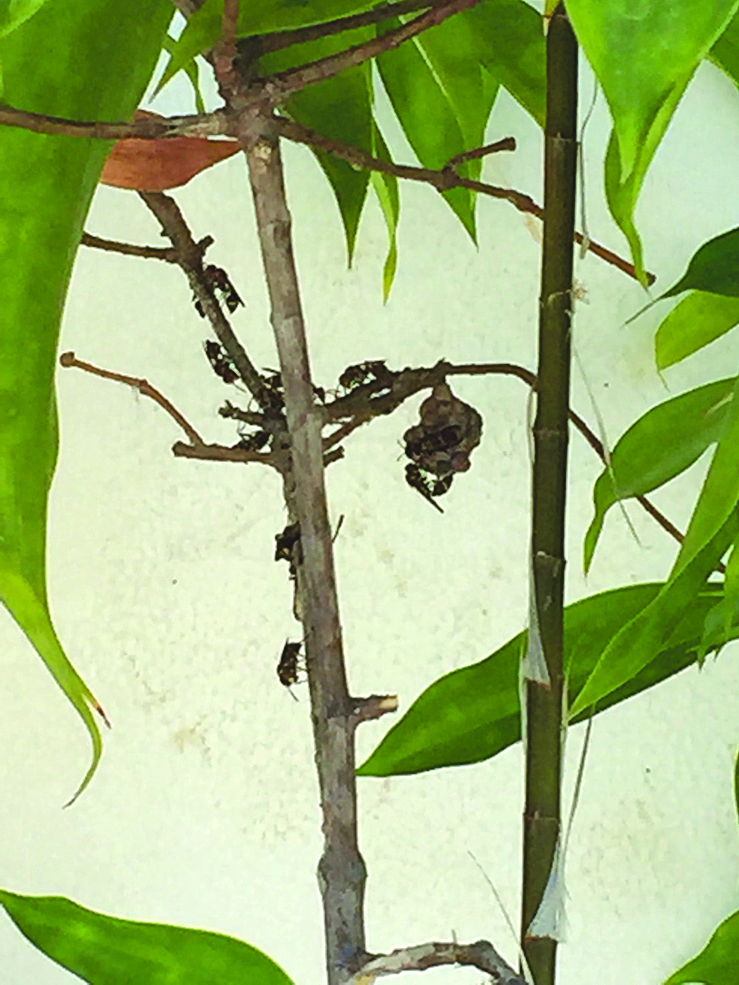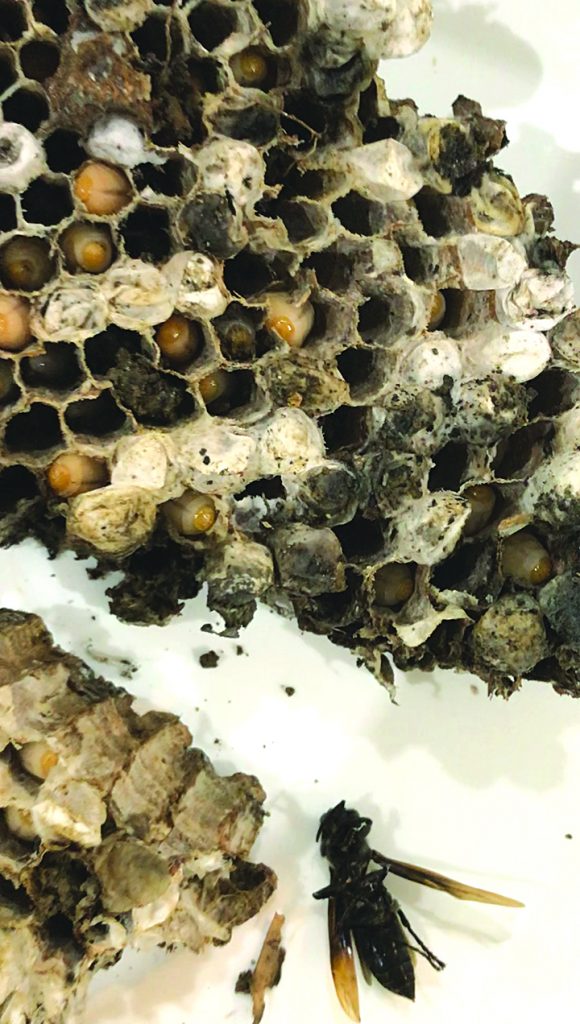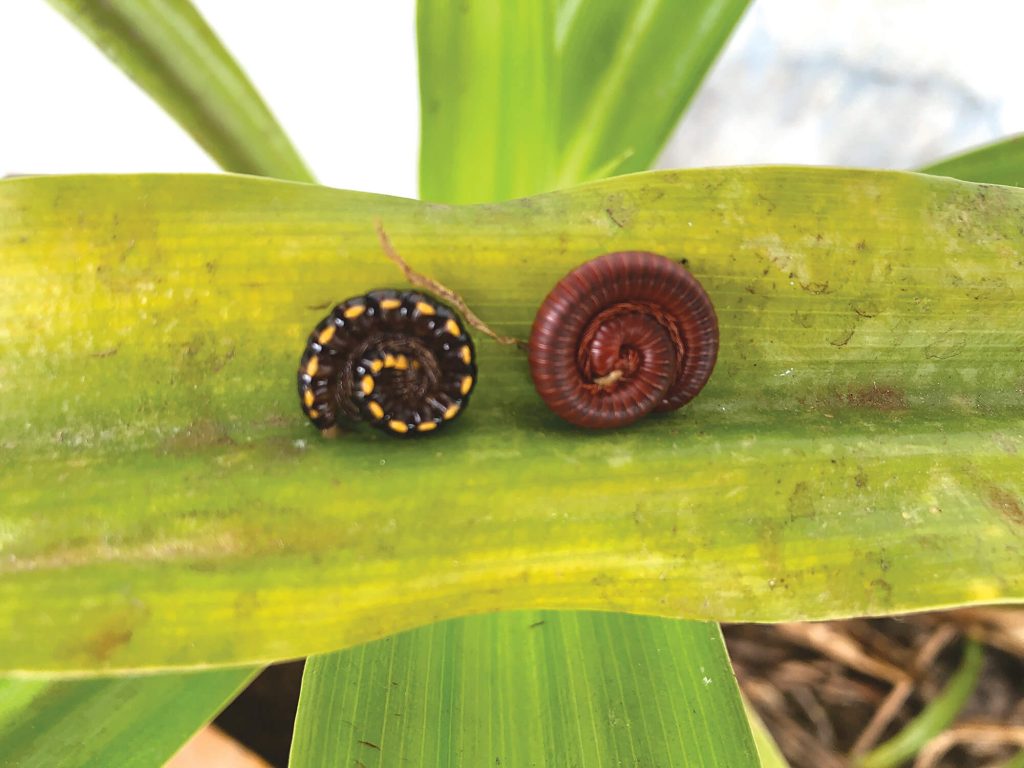PHOTOS BY VINCENT LAO
What scared our manongs to their wits’ end (and it was even scarier for us kids) was the Turong. For us barrio folks, Putakti and Turong are very different creatures with very different scare levels. But for the English encyclopedia, they are just Wasps. Maybe next time, we can have Mr. Grolier and Mr. Webster get stung, so that they can agree with us that more distinction must be given between them.
And then, there are actually two kinds of Turong we are familiar with: the ones that build nests up in the trees, and the ones that nest underground.

TREE NESTERS
The tree nesters are actually smaller (about one inch long) and their sting, while a few times more painful than the Putakti’s, is still somewhat tolerable for the toughest manongs. The danger with these tree nesters is that they are quite aggressive and the colony can get really big.
Their regular nest would be apple-sized to plate-sized. But rare old colonies can build their nest as big as a human being.
I am kicking myself in the head because I could not locate my old picture of such a nest, which was bigger than a human toddler and housed hundreds of these dreadful stingers.
I remember this one time during my primary school years, there was a bit of commotion in a wooded area. The strong wind had agitated a colony of Turong nested on a mango tree. The Wasps attacked a female passerby and she got stung two times on the head. This caused her to lose consciousness. Thankfully, she was able to recover at a local hospital.

UNDERGROUND DWELLERS
The underground-dwelling Turong would nest in a sizable hollow portion of the ground. There is actually such a nest near my brother’s house, inside his property.
I am assuming that this colony, whose nest is as shown in the picture, occupied an abandoned Termite mound.
We contracted several men to clean the surrounding undergrowth, because the area was getting too dense and Mosquitoes were thriving. The men suddenly ran away screaming, “Turong!” It was a good thing that none of them got stung.
The next day, we called in the Turong “experts” to study the situation. They recommended the removal of the nest, because the colony was considerably large and the nest too close to the houses of the area. They returned late at night with torches and sacks. They covered the nest entrance with sack and blew smoke into the nest.
The Turong, blind in the dark and suffocated by the smoke, all flew into the sack. The manongs then dug out the nest. Sure enough, it was a sizable nest full of maturing larvae. If it was not removed, the size of the colony would double in the coming days and would definitely have posed a danger to the nearby livestock and residents.

MYRIAD CREATURES
There were many other Invertebrates living with us in this location. There were a lot of Butterflies, small, medium, and large; there were red Millipedes and black Millipedes (Flat-backs).
There were also the regular scurrying Centipedes who had that very painful sting and my wife experienced it firsthand on her hand; there were the House Centipedes who posed no threat to humans but are even more creepy-looking. And then there was also the scary but peaceable Huntsman Spider as shown crawling on my daughter’s hands.

There were dozens of different kinds of Moths and Bees and many other Arthropods: Insects, Spiders, Centipedes, and Millipedes. Apart from Arthropods, there were also these giant Snails. I assume that they were Giant African Snails.

It was so funny to watch the Dog watch the Snail race across the garden. Soon enough, the Dog was fast asleep.

Bonus: Here is a video of a Flying Lizard found in Palawan, courtesy of the author, Alvin.






